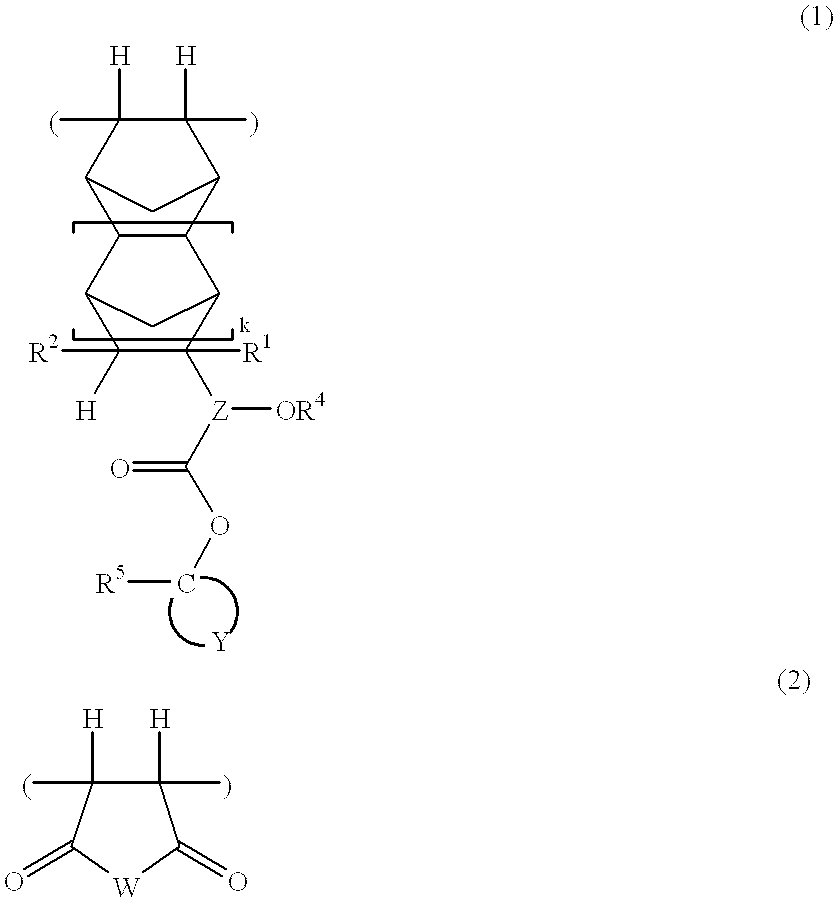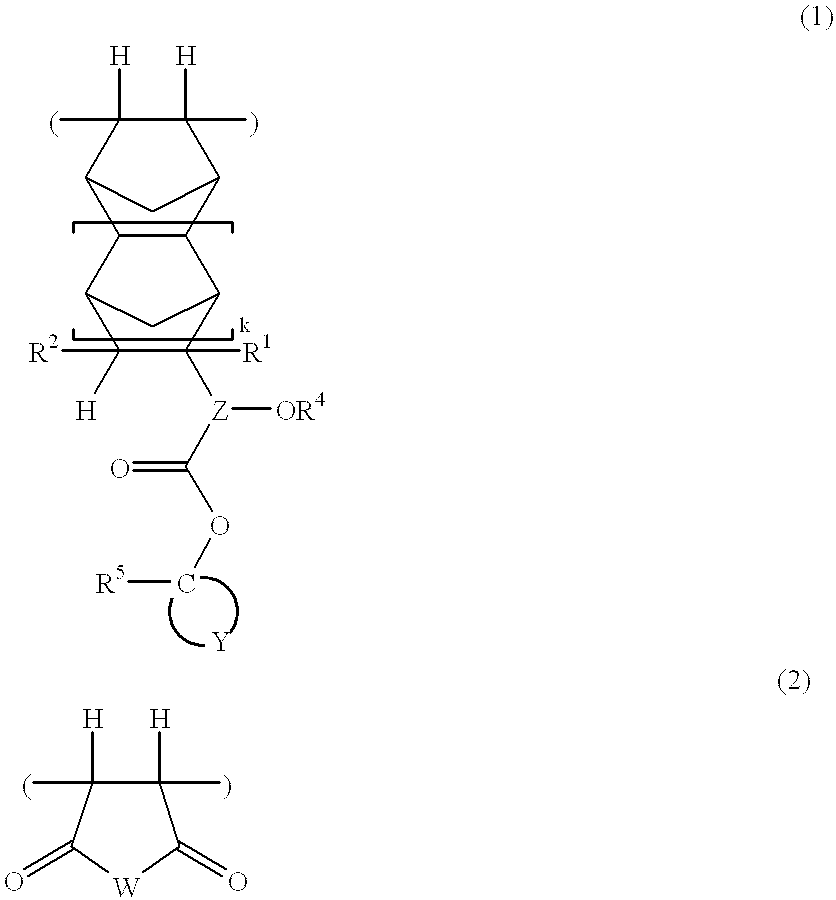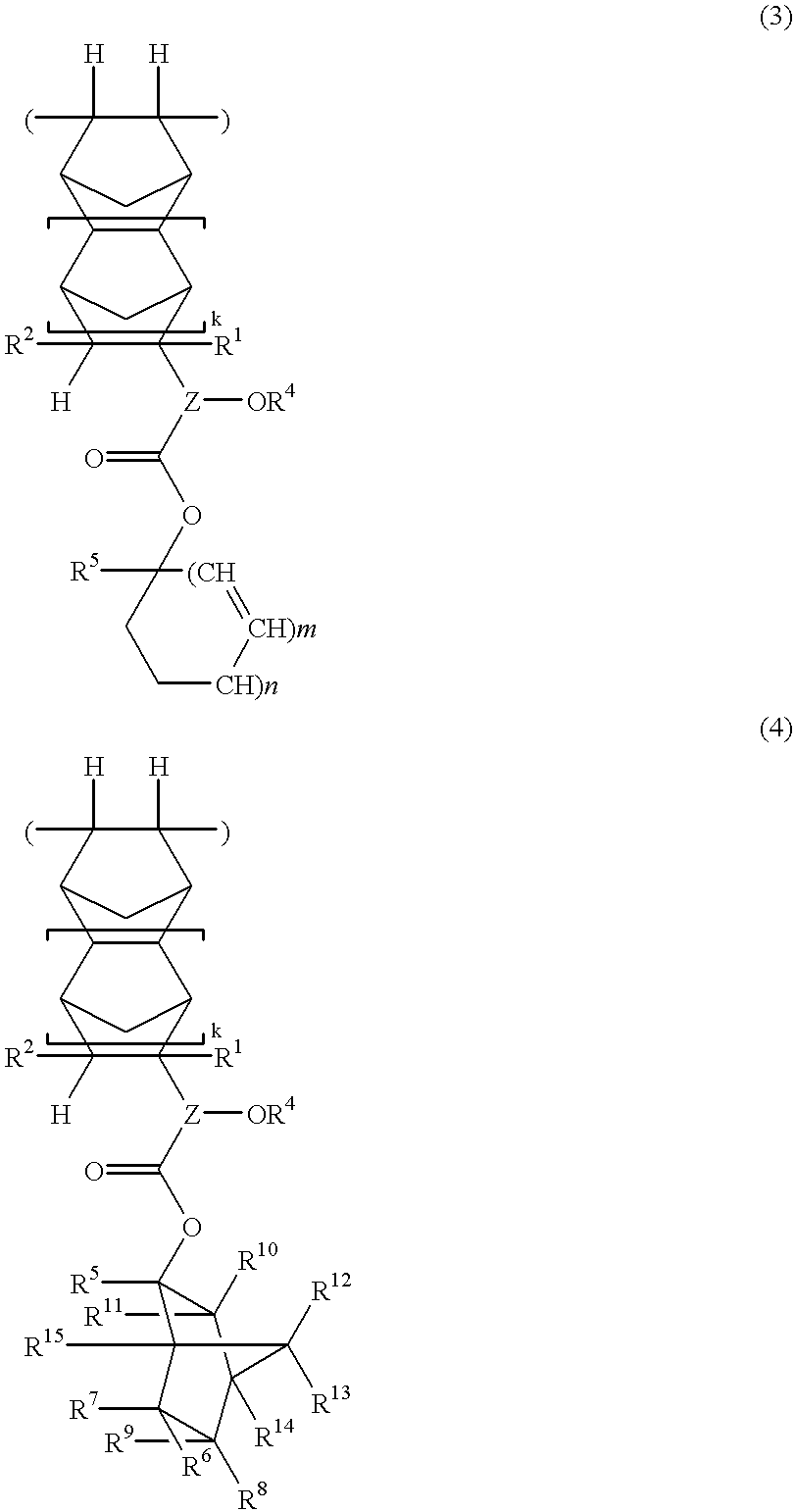Polymers, resist compositions and patterning process
a technology of composition and resist, applied in the field of polymers, resist compositions and patterning processes, can solve the problems of unsatisfactory resins, unsatisfactory resins, and inability to meet the requirements of resist materials
- Summary
- Abstract
- Description
- Claims
- Application Information
AI Technical Summary
Problems solved by technology
Method used
Image
Examples
synthesis examples
Polymers were synthesized according to the following formulation.
synthesis example 1
Synthesis of Polymer 1
In 1 liter of tetrahydrofuran were dissolved 73.0 g of 1-ethylcyclopentyl 3-(bicyclo[2.2.1]-2-hepten-5-yl)-3-hydroxybutanoate (which had been synthesized by reacting bicyclo[2.2.1]-2-hepten-5-yl methyl ketone and 1-ethylcyclopentyl acetate in the presence of lithium hexamethyldisilazide) and 24.5 g of maleic anhydride. To the solution, 1.8 g of 2,2'-azobisisobutyronitrile was added. After agitation was continued for 15 hours at 60.degree. C., the reaction solution was concentrated in vacuum. The residue was dissolved in 400 ml of tetrahydrofuran, which was, in turn, added dropwise to 10 liters of n-hexane. The resulting solids were collected by filtration, washed with 10 liters of n-hexane, and dried in vacuum at 40.degree. C. for 6 hours, obtaining 60.2 g of a polymer, designated Polymer 1. The yield was 61.7%.
synthesis examples 2 to 12
Synthesis of Polymers 2 to 12
Polymers 2 to 12 were synthesized by the same procedure as above or a well-known procedure. ##STR36## ##STR37## ##STR38##
PUM
| Property | Measurement | Unit |
|---|---|---|
| size | aaaaa | aaaaa |
| temperature | aaaaa | aaaaa |
| transparency | aaaaa | aaaaa |
Abstract
Description
Claims
Application Information
 Login to View More
Login to View More - R&D
- Intellectual Property
- Life Sciences
- Materials
- Tech Scout
- Unparalleled Data Quality
- Higher Quality Content
- 60% Fewer Hallucinations
Browse by: Latest US Patents, China's latest patents, Technical Efficacy Thesaurus, Application Domain, Technology Topic, Popular Technical Reports.
© 2025 PatSnap. All rights reserved.Legal|Privacy policy|Modern Slavery Act Transparency Statement|Sitemap|About US| Contact US: help@patsnap.com



